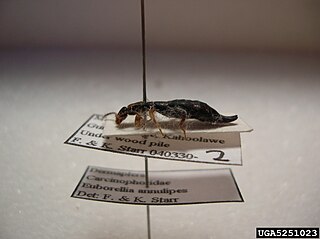
The Integrated Taxonomic Information System (ITIS) is an American partnership of federal agencies designed to provide consistent and reliable information on the taxonomy of biological species. ITIS was originally formed in 1996 as an interagency group within the US federal government, involving several US federal agencies, and has now become an international body, with Canadian and Mexican government agencies participating. The database draws from a large community of taxonomic experts. Primary content staff are housed at the Smithsonian National Museum of Natural History and IT services are provided by a US Geological Survey facility in Denver. The primary focus of ITIS is North American species, but many biological groups exist worldwide and ITIS collaborates with other agencies to increase its global coverage.
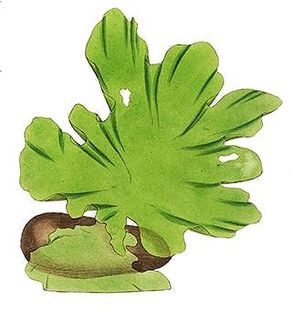
Ulvales is an order of green algae.
Pritchardia aylmer-robinsonii is a species of palm tree that is endemic to the island of Niʻihau, Hawaii, United States. It inhabits coastal dry forests at an elevation of 70–270 m (230–890 ft). P. aylmer-robinsonii reaches a height of 7–15 m (23–49 ft) and a trunk diameter of 20–30 cm (7.9–11.8 in). Harold St. John discovered this species in 1949, and the specific epithet refers to Aylmer Francis Robinson, a member of the family that owned the island. P. aylmer-robinsonii has been reintroduced to the Makauwahi Cave Reserve on Kauaʻi, where the species is believed to have previously ranged.
Pritchardia lanaiensis, the Lānaʻi pritchardia, is a species of fan palm that is endemic to Hawaii in the United States. It can only be found on the island of Lānaʻi.
The giant skippers are butterflies in the disputed subfamily Megathyminae, which is part of the skipper family. Some authorities treat this as a distinct and separate subfamily, but more modern classifications tend to place them within the subfamily Hesperiinae. However, some works, such as the Integrated Taxonomic Information System, still treat is as a valid subfamily. The giant skippers include two tribes, Aegialini and Megathymini. There are three genera and about eighteen species in this subfamily. These butterflies typically live in the southwest United States and Mexico in desert areas.
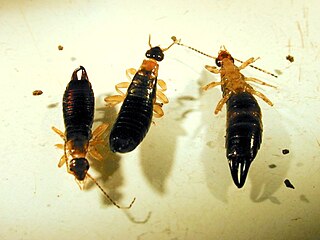
Euborellia is a genus of earwigs in the subfamily Anisolabidinae. It was cited by Srivastava in Part 2 of Fauna of India. Euborellia are small, dark-colored earwigs. Species can be difficult to distinguish from one another. There are about 50 species.
Euborellia ambigua is a species of earwig in the family Anisolabididae.

The ringlegged earwig is a species of earwig in the family Anisolabididae.
Euborellia aporonoma is a species of earwig in the family Anisolabididae.
Euborellia caraibea is a species of earwig in the family Anisolabididae.
Euborellia cincticollis is a species of earwig in the family Anisolabididae.
Euborellia eteronoma is a species of earwig in the family Anisolabididae.
Euborellia femoralis is a species of earwig in the family Anisolabididae.
Euborellia plebeja is a species of earwig in the family Anisolabididae. Like other members of the Anisolabididae family, this species has an elongated virga, a sclerotized tube that is part of the male genitalia.
Anisolabis mauiensis is a species of earwig in the genus Anisolabis, the family Anisolabididae, the suborder Forficulina, and the order Dermaptera.
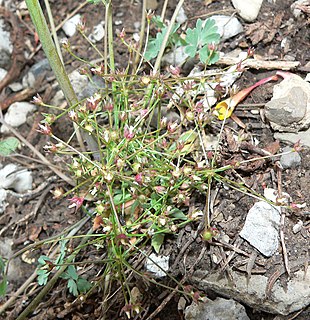
Androsace septentrionalis is a species of annual herbaceous plant in the Primrose family (Primulaceae), native to North America, Asia, and Europe. It is a small plant with a rosette of leaves and umbels of small white flowers held on multiple stems.
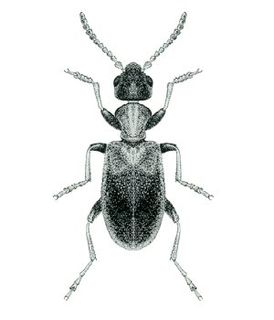
Anthicus floralis, the narrownecked grain beetle, is a beetle species.
Primula rusbyi is a species of Primula. Its common name is Rusby's primrose.
Isobryales are an order of moss. Its taxonomic status is not clear. The Integrated Taxonomic Information System and National Center for Biotechnology Information databases consider it a synonym of Bryidae and Hypnales, respectively. The Global Biodiversity Information Facility considers it valid in its own right.

